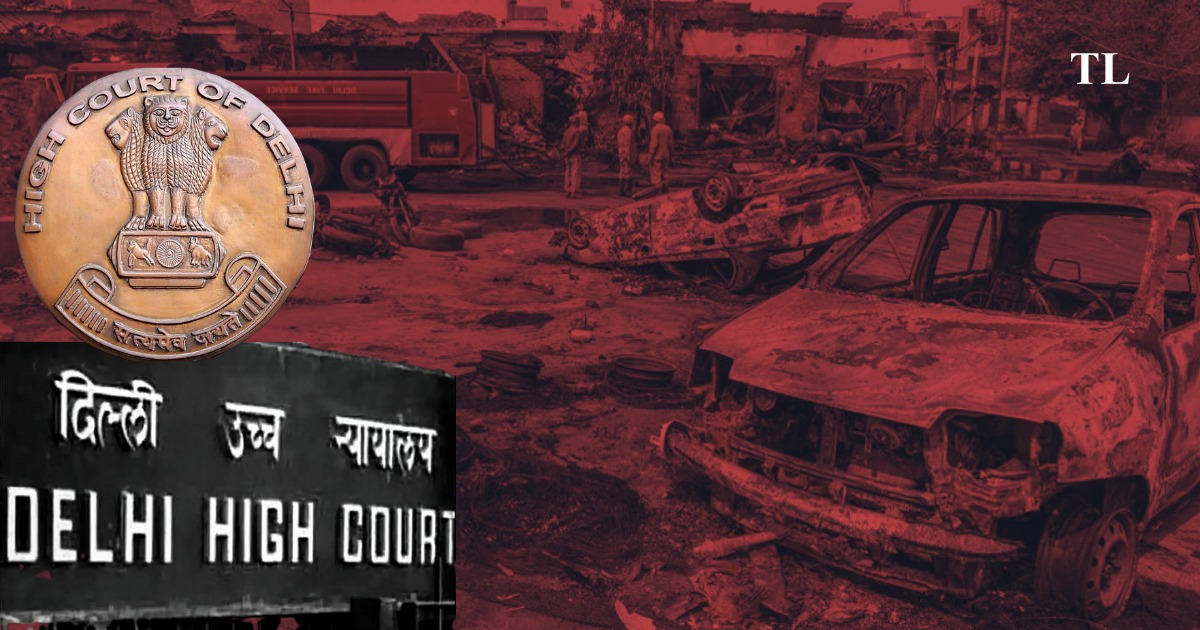THE Delhi High Court Friday granted bail to the five accused who have been languishing in jail over the murder of Head Constable Ratan Lal, for causing head injuries to a North-East Delhi Deputy Commissioner of Police and creating violence in the Chand Bagh area during the February 2020 riots.
A single-judge bench presided by Justice Subramonium Prasad granted bail to Mohd Arif, Shadab Ahmad, Furkan, Suvaleen and Tabassum, saying, “It is egregious and against the principles enshrined in our Constitution to allow an accused to remain languishing behind bars during the pendency of the trial”.
The five are facing murder charges and are accused of being members of an unlawful assembly that is said to be guilty of offences committed in the prosecution of a common object(Section 149 IPC).
The Court observed Section 149 read with 302(Punishment for murder) IPC could not be invoked on the basis of vague evidence and general allegations.
“When there is a crowd involved, at the juncture of grant or denial of bail, the Court must hesitate before arriving at the conclusion that every member of the unlawful assembly inhabits a common intention to accomplish the unlawful common object”, the judge said.
Emphasizing that bail is the rule and jail the exception, he said courts must exercise their jurisdiction to uphold the tenets of personal liberty, subject to rightful regulation of the same by validly enacted legislation.
“It is the Constitutional duty of the Court to ensure that there is no arbitrary deprivation of personal liberty in the face of excess of State power”, the high court said.
In the bail order concerning accused Shadab Ahmed and Tabassum, the high court observed the right to protest and express dissent was a right that “occupies a fundamental stature in a democratic polity”, and therefore, the sole act of protesting should not be employed as a weapon to justify the incarceration of those exercising the right.
Granting bail to Shadab, the court observed he had not been caught on any video footage in the vicinity of the protest site nor the CDR and the Cell ID details which had been placed on record by way of the chargesheet and the supplementary showed that he had arrived within the vicinity of the site of the alleged incident post the commission of the alleged offence.
It found weight in the submission of Shadab’s lawyer Rebecca John who contended that if he was involved in mobilising the mob he would have been at his residence till 12:10 PM when, according to the prosecution, the preparation started at 11-12 PM itself when the CCTV cameras were systematically dislocated. The Call Detail Records of the petitioner showed that the petitioner was on the move.
“The fact that the petitioner’s location is recorded through a mobile tower which is near the scene of crime cannot, at this moment, lead to a definitive conclusion that the petitioner was there at the scene of crime, and therefore, should be denied bail. At this juncture, it appears that the statements of the police officers that have been recorded are wholly contradictory to the CDR and Cell ID details that are on record”, the high court order read.
Though the high court said definitiveness and the veracity of the statements of the public witnesses and police officials was not to be delved into at the time of a bail hearing, the same was not sufficient to justify the continued incarceration of the petitioner.


